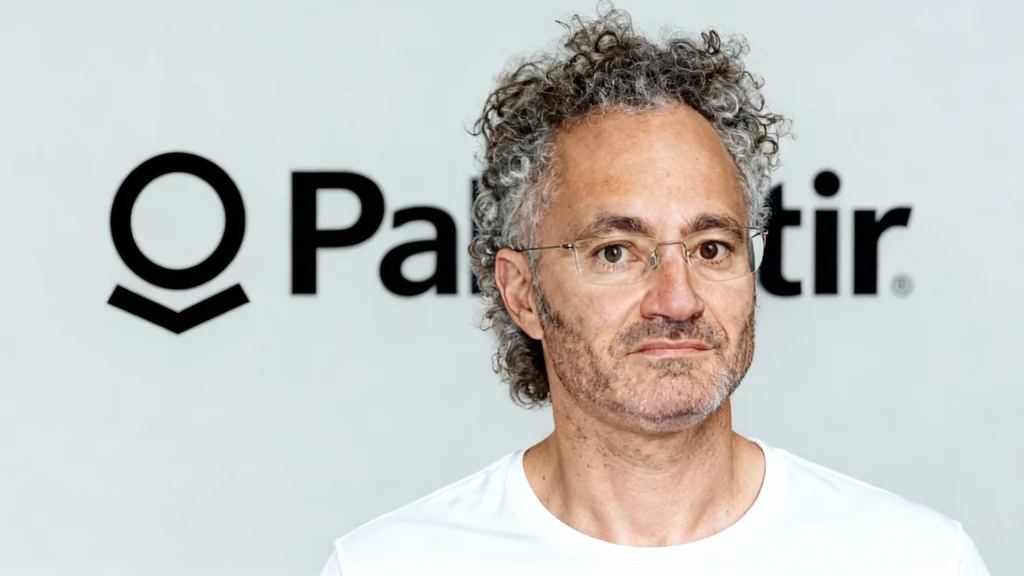Inside the Black Box: How Palantir Secretly Built a Global OS

While a generation of tech giants built apps for attention, one company, operating in the shadows, built an operating system for power.
That company is Palantir.
For two decades, it has been the most powerful and misunderstood company in Silicon Valley. It’s the invisible backbone of the Western intelligence apparatus, a strategic weapon for Fortune 500 companies, and the subject of endless controversy.
Following our analysis of hardware insurgents like Anduril and Shield AI, Palantir represents the other, more critical half of the “Defense Tech 2.0” revolution: the “brain” that commands the “fist.”
This is the story of how Palantir built an unassailable moat by solving the world’s most complex data problems, all while hiding in plain sight.
The Origin: A Post-9/11 Insurgency
Founded in 2003 by Peter Thiel, Alex Karp, Joe Lonsdale, Stephen Cohen, Nathan Gettings, and a small team of PayPal alumni, Palantir wasn’t born to sell ads or optimize clicks.
It was born from the ashes of 9/11 with a single, contrarian mission: to build the data analysis tools that the CIA and FBI should have had to “connect the dots” and stop the attacks.
While Google was building an index for the public web, Palantir was building an engine to find terrorists in a mountain of classified, messy, and disconnected data.
The Arsenal: An Operating System for the World
For years, nobody really knew what Palantir sold. It was dismissed as a high-priced, secretive consulting firm.
This was a deliberate misunderstanding. Palantir doesn’t sell services; it sells the operating system.
- Gotham: The OS for Defense. This is the original, legendary product. It’s the “black box” you see in spy movies. Gotham is an OS that fuses every piece of data a military or intelligence agency has—satellite imagery, drone feeds, human intelligence reports, sensor logs—into a single, queryable model. It’s the “brain” that lets a general see the entire battlefield.
- Foundry: The OS for Industry. This was the masterstroke. Palantir took its military-grade OS and sold it to the commercial world. Companies like Airbus, BP, and Ferrari use Foundry to run their entire operations. It manages their supply chains, optimizes factory floors, and predicts part failures.
- AIP: The OS for the AI Revolution. This is their new frontier. AIP (Artificial Intelligence Platform) is the layer that allows companies to safely and securely deploy large language models (like a private ChatGPT) on top of their own sensitive data, using Gotham or Foundry as the foundation.
The Moat: Elite, Expensive, and Unremovable
Palantir’s dominance doesn’t come from being cheap or easy to use. It comes from three strategic pillars that make it one of the “stickiest” products ever built.
- Extreme Stickiness (The “Digital Concrete”): Once an organization—like the entire US Army or a global manufacturer—builds its operations on Palantir’s OS, it is almost impossible to rip it out. It’s not a tool; it’s the central nervous system.
- Secrecy as a Brand: Palantir’s “black box” reputation isn’t a liability; it’s a filter. It signals that their product is not a toy. It’s an elite, military-grade weapon for solving problems that commodity SaaS can’t touch.
- The “Forward-Deployed Engineer”: Unlike SaaS companies that offer a helpdesk, Palantir famously embeds its elite engineers with clients to solve their hardest, most bespoke problems. This high-cost, high-touch model ensures the product works, creating unbreakable client relationships.
Founder Lessons from the “Black Box”
- Solve Impossible, “Boring” Problems. While the world was building photo-sharing apps, Palantir was solving data integration for global intelligence. The most valuable problems are often the ones no one else has the patience or a_m_bition to tackle.
- Build a System, Not a Tool. Don’t just sell a feature. Build the entire operating system. The company that owns the platform wins every time.
- Your Business Model is Your Brand. Palantir’s high-cost, high-touch, secretive model is its marketing. It instantly disqualifies 99% of customers and makes the 1% who can afford it feel like they’re buying unrivaled power.
Final Word
Palantir’s story is the ultimate Business Runway case study. It’s a testament to founder conviction, a contrarian business model, and the power of building a product that is not just useful, but indispensable.
They proved that in a world obsessed with attention, the real, enduring power is built behind the curtain.